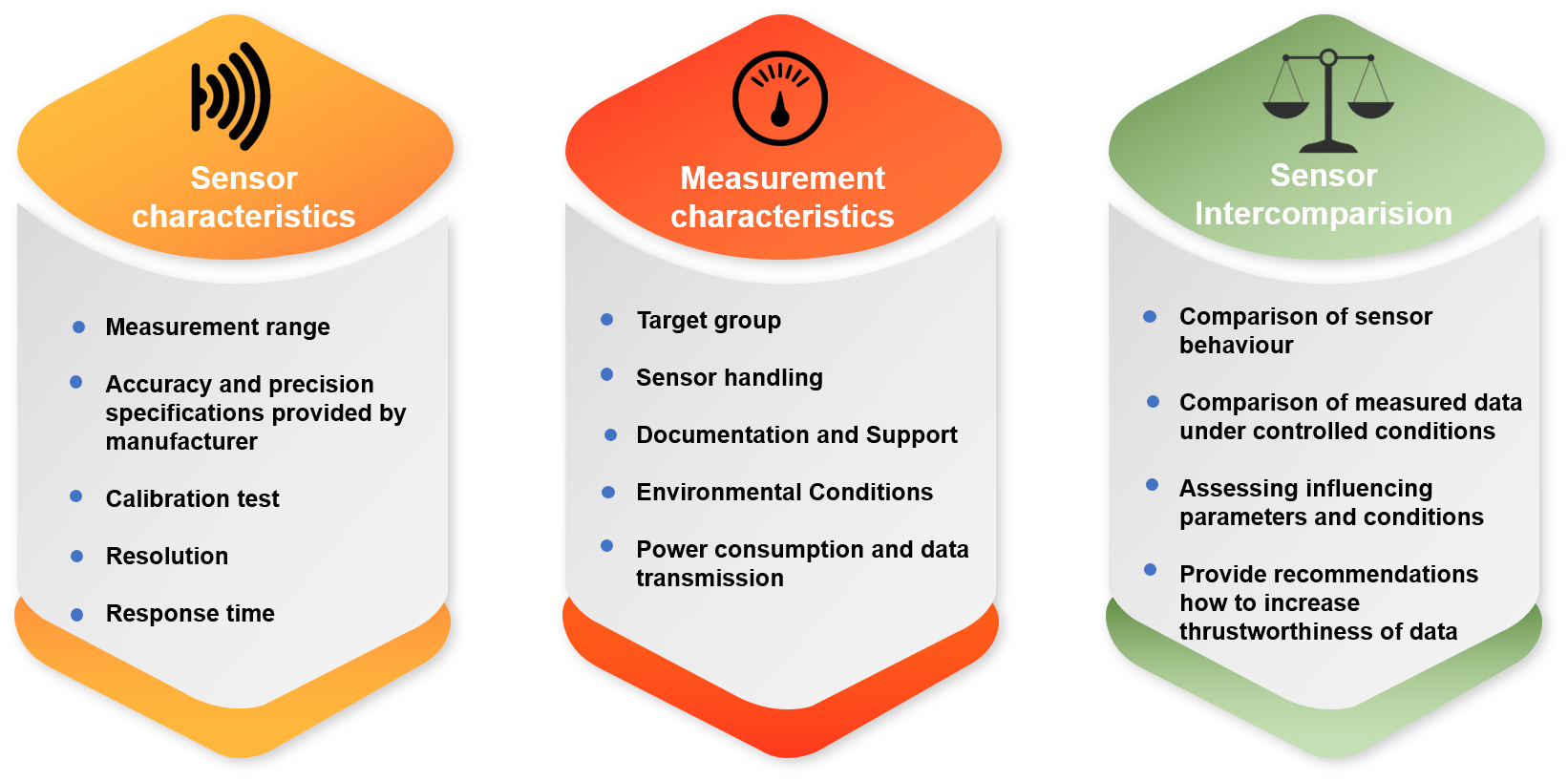Step 5: Test and comparison measurements
Sensor intercomparison experiments in particular are necessary to investigate the behaviour of different sensors under the same test conditions. By comparing sensor measurements with each other or with reference standards, these experiments provide valuable insight into the performance, accuracy and reliability of sensors. By performing intercomparison experiments, researchers can identify discrepancies or biases between sensor readings, allowing them to assess the consistency and validity of the data produced. Intercomparison experiments also help to understand the factors that affect the performance of sensors, such as variations e.g. in temperature or other environmental conditions.

Questions to be answered regarding test and comparison measurement:
| Topics | Questions |
|---|---|
| Sensor characteristics |
• What is the measurement range of the sensor and is it within the expected measurement range? • What does the manufacturer say about the accuracy and precision of the sen-sor? Do these meet the measurement requirements? • Does the sensor require regular calibration? If so, when was the last calibration performed? • What is the temporal and spatial resolution of the sensor? • What is the response time of the sensor? Is a sensor delay possible and could this delay be corrected? |
| Measurement characteristics |
• Who is will use this sensor? What is the target group? • Is the sensor easy to set-up and operate for the users? • Do users have easily understandable manuals in their native language? • Is there any support in sensor handling available within the project? • What are the expected environmental conditions and does the sensor charac-teristics meet the requirements? • Does the required charging time meet the user’s expectations? |
| Sensor intercomparision |
• Are there any published or known intercomparison experiments for this sen-sor? • Are intercomparison experiments being carried out within the project? If so, what type of sensor is the reference sensor and how was the experimental setup? • Is the sensor output comparable with other sensors? Is there a need for correc-tion? |
